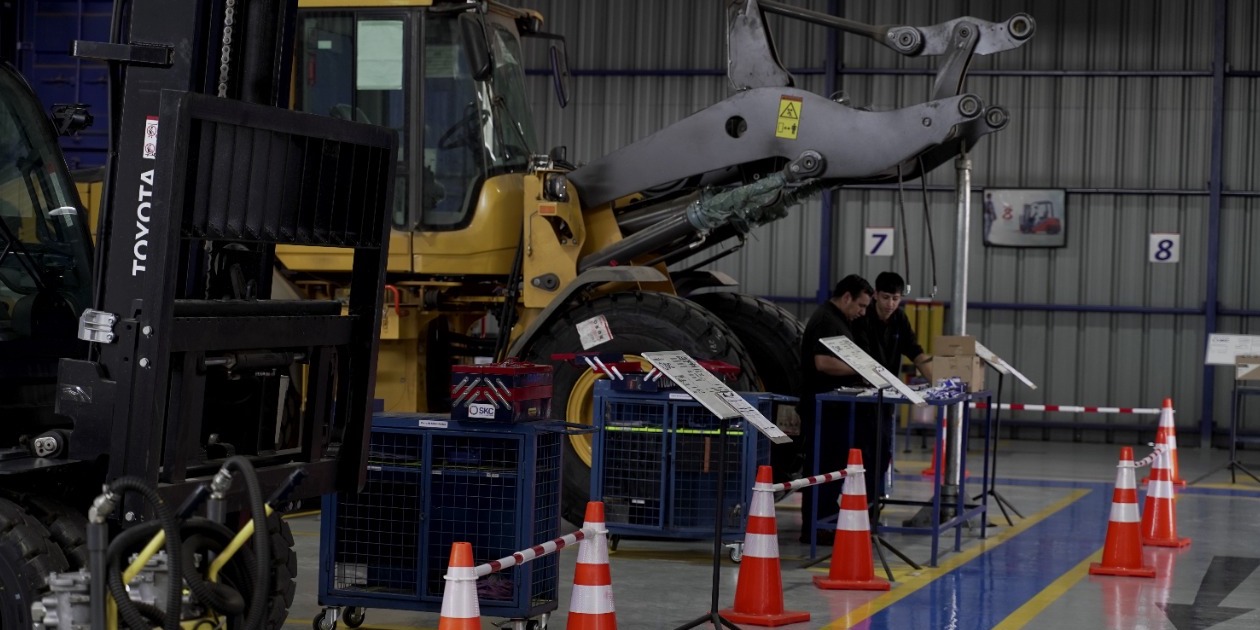
Where are we in lean product development?
FEATURE – The authors discuss some of the most common problems that product development teams experience and what an effective assessment tool for engineering looks like.
Words: The Lean Global Network LPPD Team
In the hyper-competitive world we live in, establishing a lean product and process development (LPPD) process is of critical importance. With disruption lurking around every corner, efficiently and quickly creating the products our customers want has become a matter of life and death for organizations in any sector. To survive, companies need a solid process for innovation.
What many of them have, instead, is an antiquated, cumbersome and ineffective approach to new product development. In our work around the world, we have come across countless organizations and had the opportunity to observe their R&D process from up close. In particular, we have been able to identify a number of problems that are common to many product development departments the world over.
For example, we have seen how many organizations plan their activities without taking into account their limited capacity and resources. In a bid to improve their bottom line, they tend to take on a large number of projects, which they then struggle to handle. Delays and changes in priority are an every-day occurrence and people take them as “part of the job”.
We have also found that most R&D department centralize the development work and don’t rely on a project manager, which of course limits their contact with the actual work performed by engineers. When a project manager is present, he or she tends to be seen as a superman or superwoman who is supposed to define, follow and ensure execution at all levels – all the way to individual tasks. He/she is expected to control the tasks of the whole team to ensure the product reaches the customer on time, on budget and with the right quality. Lean suggests a more collaborative approach here, where the manager controls the delivery, but it is up to the individuals assigned to the project to take responsibility of single tasks.
Another common problem is the almost complete lack of standards when it comes to defining the way value is delivered to the customer. At best, project teams follow guidelines somebody higher up in the company structure came up with. There is no established process guiding their work, however, which means that technical decisions are once again made by the “boss”. And at that point we typically see there is no leader standard work for the review of the problems and for running the problem-solving work.
In larger organizations, where there are a few project managers, we see people repeating the same mistakes over and over again at different stages in the process. This is because no effort has been made to consolidate, capture and transfer knowledge within a project and between projects. (People sharing information in the cafeteria is how structured knowledge transfer typically is.)
The list goes on. In the few organizations that we have seen that do apply LPPD principles, the benefits of lean thinking are clear. Like any activity it is applied to, lean injects consistency in quality and scientific thinking in the problem-solving process – and the benefits for the engineering and design work are several.
Yet, even in those companies, it’s evident that the transformation of the product development work is a long, uphill climb. When faced with a million problems, the first thing you need to do is sort through them and identify the critical ones you will focus on first. The best way to do so is an assessment.
CORRECTLY ASSESSING PRODUCT DEVELOPMENT WORK
Of course, the idea of an assessment is not new. It’s a logical first step, and it’s been used in companies for a very long time. Yet, we find that assessment tools often lack certain elements.
A lot of the time, they are nothing more that sterile surveys for a senior manager to answer. Somebody’s impressions or interpretations of a situation, however, don’t constitute an assessment. Capturing one point of view might be faster, but it is not enough to get a clear understanding of the current state (in our experience, ask the boss and you will hear everything is great; ask someone at the front line and you will learn how bad things are). It is critical to bring to the surface the issues that all parties involved experience: not only does this allow us to have a clearer picture of the state of things; it also makes people aware of problems and encourages them to share more openly.
Another thing we find current assessment methods lack is the empirical evidence of what people say in their answers to a survey. They simply don’t take the gemba into account (as it often happens when lean is not part of the equation). Without it, it’s impossible to verify the data we gather and the result will never be the comprehensive view we need to know where to take our improvement efforts.
In general, the assessment methods available today (many of which rely on a piece of software) rarely provide an exhaustive view of the situation at hand and therefore can’t point us in the right direction.
At the Lean Global Network, we have been studying Lean Product and Process Development for a long time. For the past couple of years, our team (made of people from several countries, with a wide array of experiences and backgrounds) has been busy visiting companies and truly understanding the current state of LPPD adoption around the world. As part of our efforts, we are developing an assessment tool that, we believe, helps to understand the main gaps and addresses all the problems stated above.
Always keeping Purpose, Process and People as a North Star in our work, we have built an assessment tool based on the most common problems we have identified in the companies we worked with. These not only touch the technical aspect of LPPD, but the whole context in which the development work takes place.
To design the tool, we have been looking at the most common obstacles found in the five dimensions of the Lean Transformation Framework – including the lack of a mechanism to understand customer value, of standards to manage projects, of problem-solving capabilities applied to the development process, of reusable knowledge, of the right organizational structure and management systems, or of leaders who are able to develop a LPPD mindset in their people. We started from the theory (our hypotheses, what we already knew), ran experiments with companies, analyzed the results, and extrapolated the findings to perfect the assessment tool. This is its latest iteration, and we look forward to continuing to test it on the ground.
WHY IS OUR ASSESSMENT DIFFERENT?
- We go to the gemba to get a better understanding of the situation, which surveys taken while sitting at a desk can’t provide;
- We involve everyone who participates in new product development to answer our questions;
- We create awareness and alignment to encourage people to take part in the resolution of the problem;
- It is fast (it can be done in a couple of days) but comprehensive. It touches different levels of a department and different processes, not just senior management.
- It is based on a holistic view and looks at every element you need in a lean transformation to identify the gaps you need to fill.
- It is followed by a strategic meeting to choose the way forward, by using a radar chart that combines the findings of the gemba walk with the Top 3 priorities each team has identified during the interviews.
The purpose of this assessment is to offer a clear view of where an organization is in their LPPD transformation journey and how to focus their efforts to positively impact the whole business.
THE AUTHORS

Read more


FEATURE – To get the results we want from a system, or prevent it from generating undesirable events, we need to understand how it works and behaves in the real world. That’s exactly what Jidoka does.


OPINION – Most organizations today can only dream of receiving the type of enthusiastic support that certain sports teams get from their fans. In order to do that, they need to forget short-termism and put their customers first.


FEATURE – The transformational power of Lean Thinking allows us to see it as a way to solve some of the world’s biggest problems. Dan Jones explains why it can represent an alternative to our exploitation-based system.


CASE STUDY – A Chilean company selling and servicing vehicles and equipment for a variety of industries has made of humility the leading trait of its cultural transformation, with great results.

